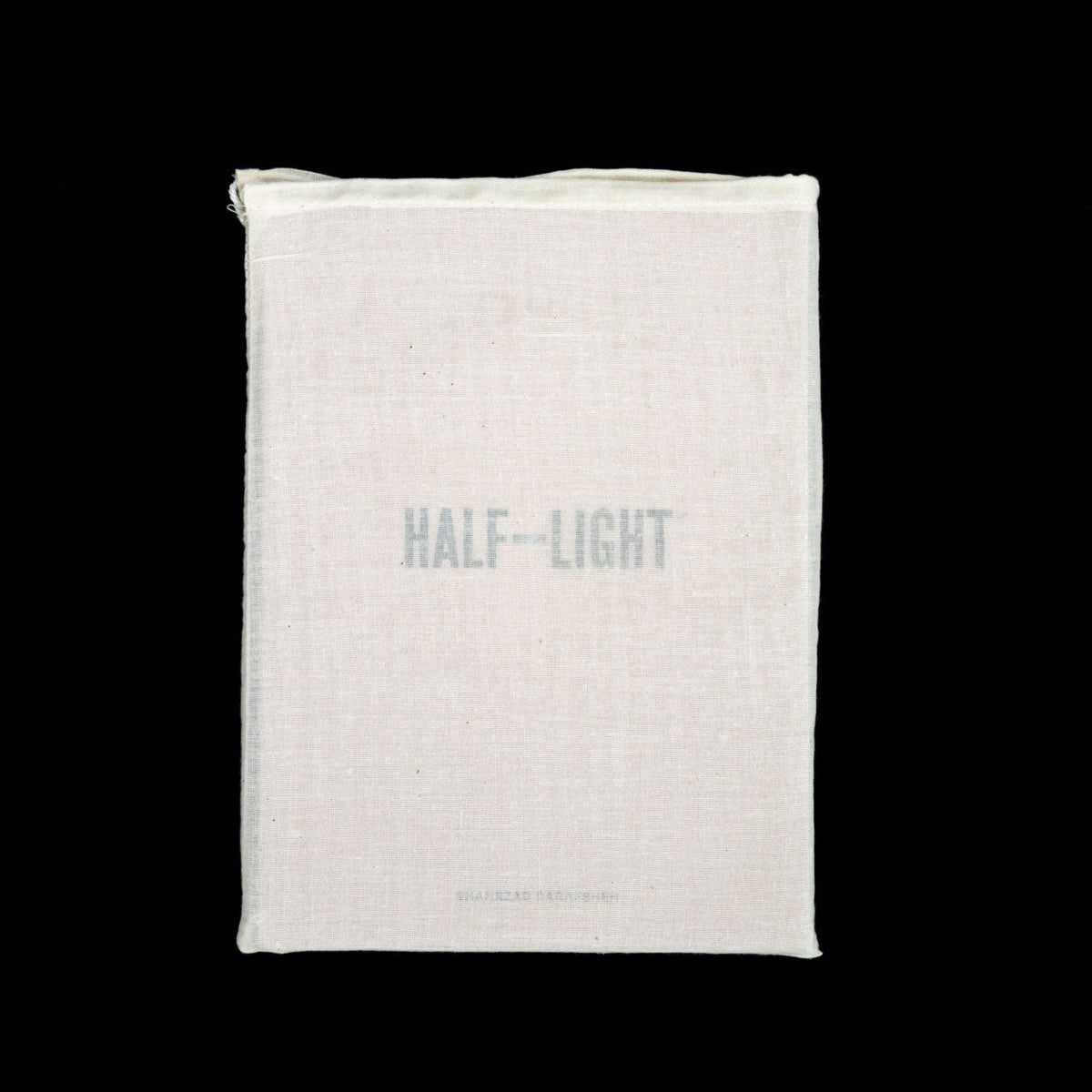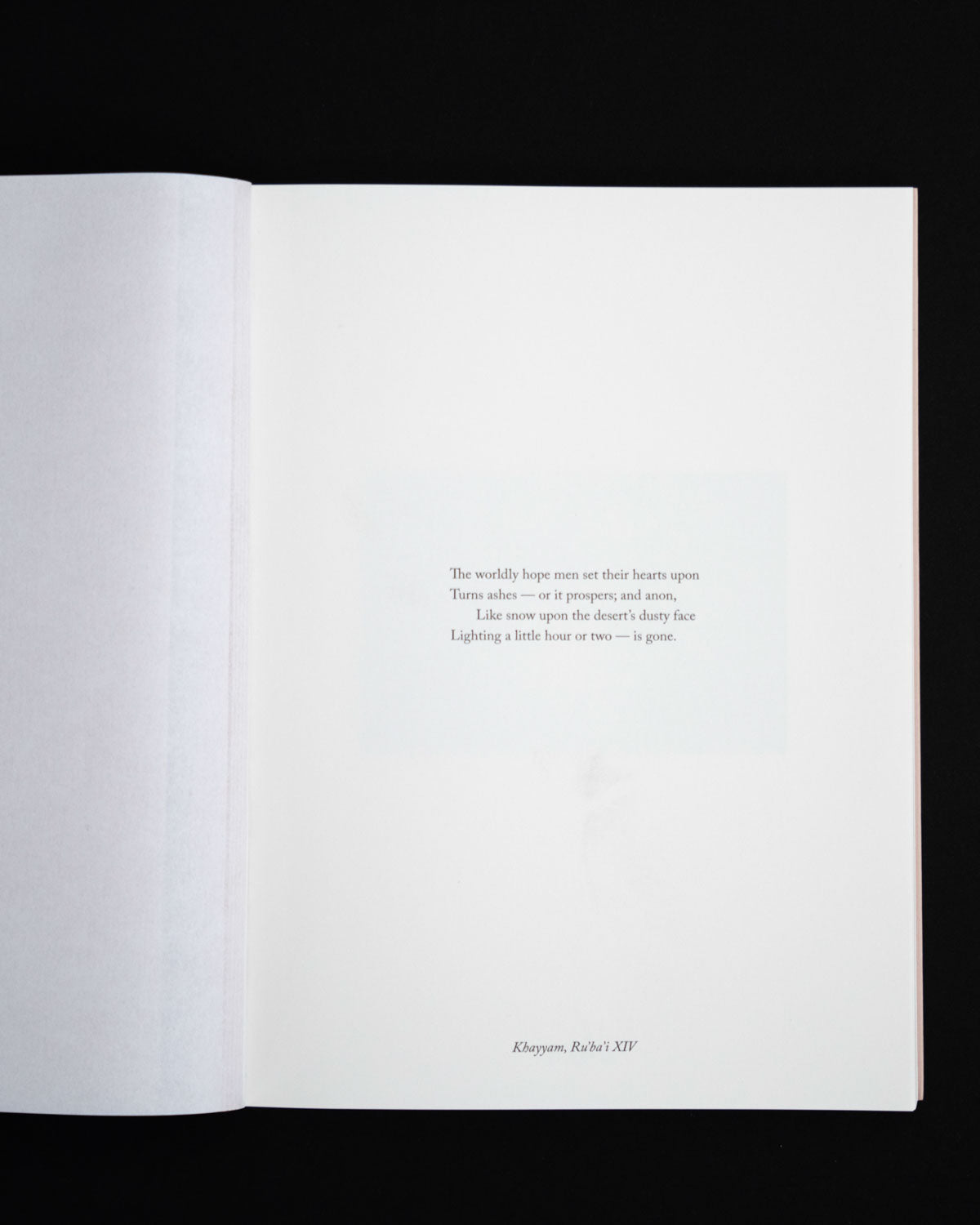HALF LIGHT by Shahrzad Darafsheh
Gnomic Book, 2018
8.6 x 6.5 in
80 pages
Soft-cover in linen bag
Bilingual in English and Farsi
First edition
Shahrzad Darafsheh is an Iranian photographer and artist, who lives and works in Tehran. She grew up in a family that appreciated art —from an early age she was exposed to photography, as her father, a carpet designer, was a photography enthusiast. Her mother encouraged creativity, and during the summer, Darafsheh would take classes in painting, drawing, and sculpture. She connected most with photography, and when she went to university, Darafsheh decided to study it. After graduation, she taught photography at Tehran Institute of Technology for several years.
“In 2014, Darafsheh’s life has changed dramatically: she was diagnosed with endometriosis, a painful disorder of the reproductive system which quickly progressed to cancer. She had to undergo an extremely hard course of treatment, and as her body started to change, she picked up her camera and began documenting the process. Darafsheh used photography to express her emotions and feelings in dealing with cancer: ‘I decided to choose my sickness to be a subject for a new project. Every working progress of my health is also a progress in my work, no matter how good or bad it is. More importantly, it helps me keeping distance of my own body while engaging deeply with it.’”
—Olga Yatskevich for Collector Daily
At the time she made this book, Shahrzad Darafsheh was a 36-year-old artist battling cancer in Tehran. This complex book, in a limited edition of 300, is a window into her life and experience.
This book operates on several levels; as a chronicle of her journey through a sickness, an object made of various materials of different opacities evoking the fragility of skin, obscuring and revealing life’s scars. As an experiment in storytelling—when read in Farsi, from right to left, the result is very different from that which an English reader will experience: it is a bilingual project that provides a view into life in a country which many of us have no knowledge of, or visibility into.









